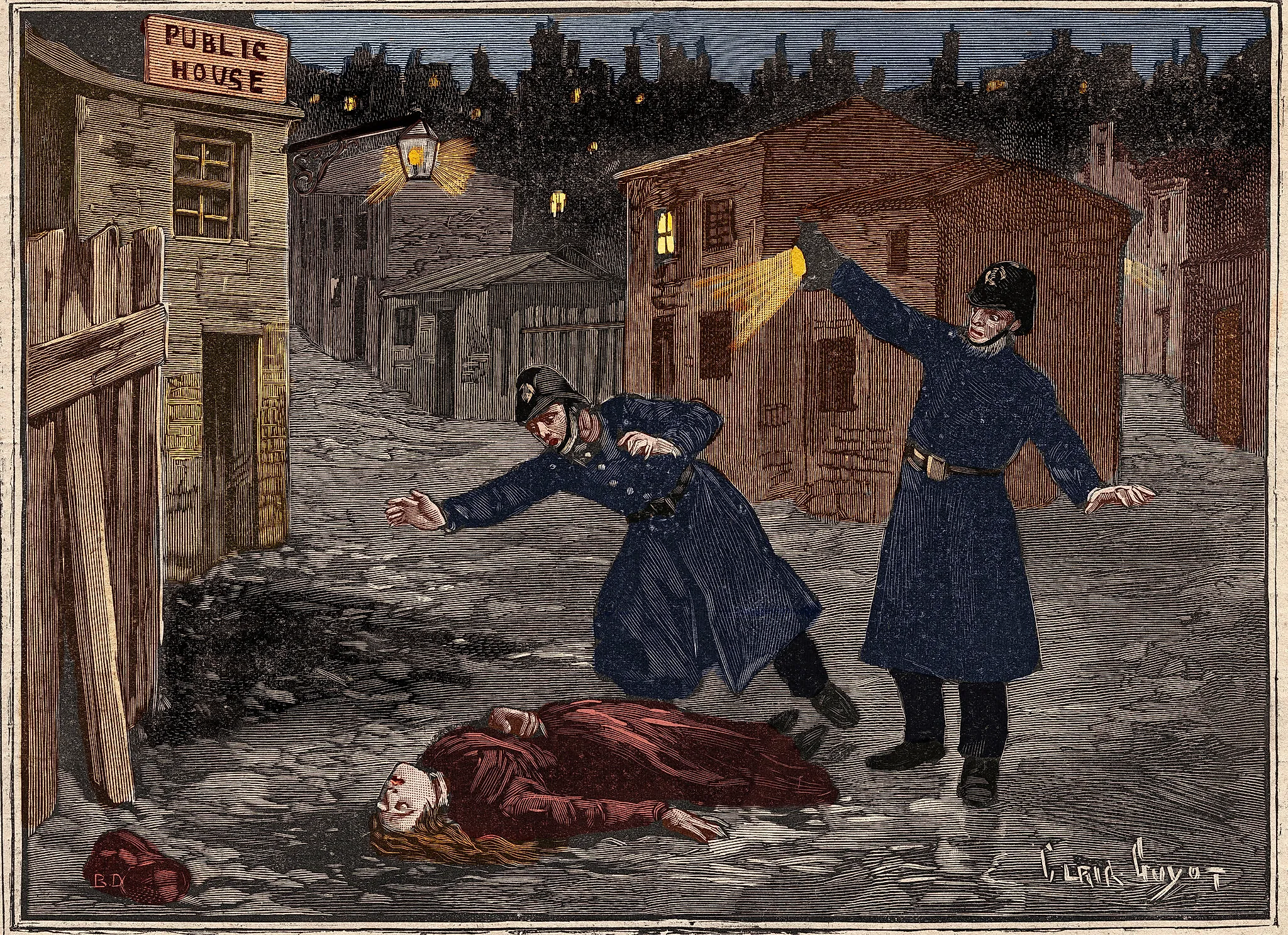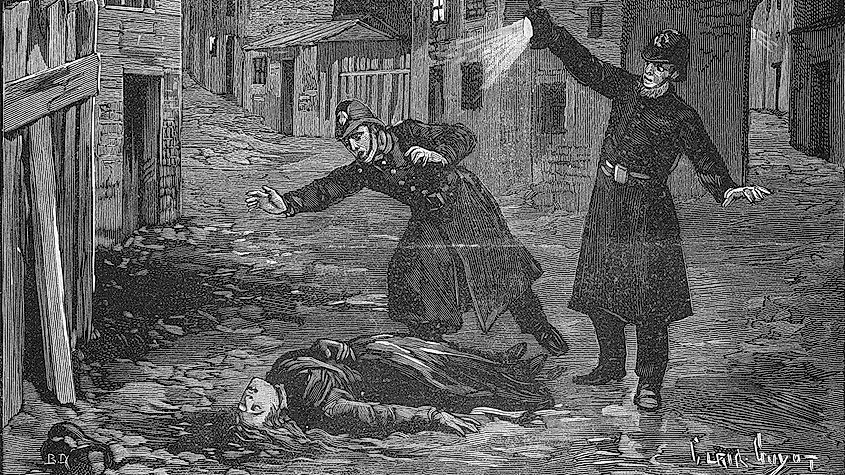
10 Of The Most Notorious Serial Killers In The World
- Jack The Ripper, Charles Manson, and Ted Bundy are the most notorious serial killers in the world.
- Belle Sorenson Gunness, aka Lady Bluebeard, murdered her husbands and boyfriends because of life insurance money.
- Gary Ridgway, aka Green River Killer, got his notorious alias because he would throw his victims in the Green River.
The phenomenon of serial killing has garnered significant attention within criminology and popular culture throughout the twentieth and twenty-first centuries. Serial killers—defined as individuals who commit three or more separate murders with cooling-off periods between each crime—have become subjects of extensive academic study, media coverage, and public fascination.
Certain cases, such as those of Jack the Ripper in Victorian London and Ted Bundy in 1970s America, have achieved international recognition due to their distinctive methodologies, the extensive media coverage they received, and their lasting impact on criminal investigation techniques. The public's interest in these cases often stems from the psychological complexity of the perpetrators and the societal implications of their crimes.
Some serial killers actively cultivate public attention through correspondence with media outlets, courtroom theatrics, or deliberate communication with law enforcement. This behavior represents a subset of cases where the perpetrator's desire for notoriety becomes intertwined with their criminal motivation. Understanding these patterns of behavior contributes to the broader field of criminal psychology and assists in developing more effective investigative and preventive strategies.
10. Coast To Coast

Tommy Lynn Sells was convicted for multiple homicides committed between 1985 and 1999 across several states, earning him the moniker "Coast to Coast Killer" due to the geographic spread of his crimes.
The case that led to Sells' arrest occurred in December 1999 when he entered a residence and attacked two young victims. One victim, a 13-year-old, sustained fatal injuries from multiple stab wounds. A second victim, age 10, survived the attack despite severe injuries and was able to seek assistance from neighbors. Her testimony and identification became crucial evidence in the subsequent investigation.
Sells' capture illustrates the importance of survivor testimony in serial killing cases, as physical evidence alone often proves insufficient for conviction. Following his arrest, investigators linked Sells to additional unsolved cases across multiple jurisdictions. He received a death sentence and was executed in 2014 at the Huntsville Unit in Texas. This case contributed to research on transient offenders and the challenges of investigating crimes that cross jurisdictional boundaries.
9. Green River Killer

Gary Leon Ridgway, known as the "Green River Killer," perpetrated one of the most extensive serial killing sprees in United States history. Operating primarily during the 1980s and 1990s in the Seattle-Tacoma metropolitan area, Ridgway targeted vulnerable women, many of whom were involved in sex work or had histories of substance abuse.
Ridgway's moniker derived from his practice of disposing of victims' remains in or near the Green River in King County, Washington. This disposal method became a signature element that helped investigators link multiple cases to a single perpetrator, though the killer's identity remained unknown for nearly two decades.
Following his arrest in 2001, aided by advances in DNA technology, Ridgway entered into a plea agreement with prosecutors in 2003. In exchange for providing detailed information about his crimes and assisting in the location of victims' remains, he avoided capital punishment. Ridgway was ultimately convicted of 49 counts of aggravated first-degree murder and received multiple life sentences without the possibility of parole. He has since claimed responsibility for the deaths of at least 71 individuals, making his case one of the most prolific in terms of confirmed victims. The investigation spanned multiple decades and demonstrated the challenges law enforcement faces when tracking serial offenders who target marginalized populations.
8. The Original

Edward Theodore Gein represents a significant case study in criminal psychology, particularly regarding the intersection of severe mental illness and criminal behavior. Active in rural Wisconsin during the 1940s and 1950s, Gein's crimes involved both homicide and extensive grave robbing, distinguishing his case from typical serial killer profiles.
Gein's background reveals several risk factors commonly associated with violent criminal behavior, including childhood trauma, social isolation, and an unstable family environment. Following the deaths of his family members, Gein became increasingly isolated on the family farm, where he developed elaborate fantasies centered around his deceased mother.
Investigation of Gein's property in 1957 revealed evidence of grave desecration and the presence of human remains that had been fashioned into various objects. Gein confessed to two homicides and admitted to exhuming corpses from local cemeteries. His case demonstrated the complexity of distinguishing between criminal intent and severe mental illness, as he was subsequently found mentally incompetent to stand trial.
Gein was committed to a state mental health facility, where he remained until his death in 1984. His case has contributed significantly to forensic psychology research and has influenced popular culture representations of mentally ill offenders. The case highlights important questions about the treatment of individuals with severe mental illness within the criminal justice system and the relationship between psychological trauma and violent behavior.
7. Lady Bluebeard

Belle Sorenson Gunness represents a distinctive case within criminal history as one of the most prolific female serial killers documented in American records. Operating between 1884 and 1908, Gunness demonstrated a systematic pattern of insurance fraud combined with multiple homicides, targeting spouses, suitors, and family members for financial gain.
A Norwegian immigrant who settled in Indiana, Gunness utilized personal advertisements to attract potential victims, often promising marriage while soliciting men to bring their life savings. This modus operandi distinguished her case from typical serial killing patterns, as her crimes were primarily motivated by financial rather than psychological gratification. Investigators determined that she collected substantial insurance payouts following the suspicious deaths of multiple family members and associates.
The case concluded dramatically in 1908 when Gunness's farmhouse was destroyed by fire. Authorities recovered remains believed to be those of Gunness along with at least eleven other individuals buried on the property. However, the identification of Gunness's remains has remained controversial among historians and criminologists, with some evidence suggesting the possibility of staged death and escape.
6. Ted Bundy

Theodore Robert Bundy remains one of the most extensively studied serial killers in criminological literature, largely due to his articulate demeanor, legal knowledge, and the comprehensive documentation of his crimes. Active primarily during the 1970s across multiple states, Bundy's case provides significant insights into criminal psychology and investigative methodology.
Bundy targeted young women, typically college students, employing various deception tactics to gain victims' trust. His methods included feigning injury or disability to appear non-threatening, impersonating authority figures, and exploiting social conventions of helpfulness. This approach demonstrated sophisticated manipulation techniques that distinguished his methodology from more opportunistic offenders.
The investigation of Bundy's crimes spanned multiple jurisdictions and highlighted challenges in coordinating law enforcement efforts across state boundaries. His case contributed to the development of criminal profiling techniques and demonstrated the importance of inter-agency communication in tracking mobile offenders. Bundy's legal background enabled him to represent himself in court proceedings, creating unusual dynamics during his trials.
Following his conviction, Bundy admitted to approximately 30 homicides, though investigators believe the actual number may be higher. He was executed in Florida in 1989. His case has significantly influenced forensic psychology research, particularly studies examining the relationship between superficial charm and psychopathic behavior. The extensive media coverage of Bundy's crimes also contributed to scholarly discussions about the role of publicity in serial killing cases and its potential impact on both investigation and public perception.
5. The Night Stalker

Richard Ramirez, known as the "Night Stalker," conducted a series of home invasion murders in the Los Angeles area during 1984 and 1985. His case represents a significant example of random victim selection and the use of residential break-ins as a method of criminal opportunity.
Ramirez's crimes were characterized by several distinctive elements that aided in linking cases across multiple jurisdictions. He employed various weapons including firearms, edged weapons, and blunt instruments, demonstrating adaptability in his methods. Additionally, Ramirez left occult symbols at crime scenes, particularly pentagrams, which served as a signature behavior that helped investigators connect seemingly unrelated incidents.
The investigation faced unique challenges due to Ramirez's random victim selection and the geographic spread of his crimes across Los Angeles County. His victims varied widely in age, ethnicity, and socioeconomic status, complicating efforts to establish patterns or predict future targets. The case highlighted the importance of forensic evidence, particularly fingerprint analysis, in linking crimes committed by offenders who do not follow predictable victim selection criteria.
Ramirez was apprehended in 1985 following a civilian identification and community response. He was convicted on multiple counts of murder and sentenced to death. He remained on death row until his death from natural causes in 2013. The case contributed to research on home invasion crimes and demonstrated the effectiveness of media coverage in generating tips that lead to suspect identification. It also illustrated the psychological impact of random violent crime on community behavior and public safety perceptions.
4. Dr. Death

Harold Frederick Shipman represents one of the most significant cases of medical serial killing in documented history. A practicing physician in England between 1972 and 1998, Shipman systematically murdered patients under his care, exploiting the trust inherent in the doctor-patient relationship to commit his crimes.
The Shipman case illustrates several key criminological concepts, particularly the abuse of professional authority and the challenges of detecting crimes committed within legitimate institutional settings. Operating as a general practitioner, Shipman administered lethal doses of diamorphine to elderly patients, often during routine home visits. His position of medical authority provided both access to victims and a plausible explanation for patient deaths, effectively shielding his activities from immediate suspicion.
Investigation revealed that Shipman had falsified medical records and, in some instances, manipulated wills to benefit financially from his victims' deaths. The scope of his crimes became apparent only after patterns of unusually high death rates in his practice prompted official inquiry. A public inquiry established that Shipman was responsible for approximately 250 deaths, making his case one of the most prolific in terms of confirmed victims.
Shipman was convicted in 2000 on 15 counts of murder and sentenced to life imprisonment. He died by suicide in 2004 while incarcerated. His case led to significant reforms in British medical practice, including enhanced monitoring of controlled substances and death certification procedures. The case also contributed to research on healthcare serial killing and highlighted the importance of institutional oversight in preventing abuse of professional authority. It demonstrated how statistical analysis and pattern recognition can be essential tools in identifying criminal activity within healthcare settings.
3. Monster Of The Andes

Pedro Alonso López represents a complex case study in international criminal justice, highlighting the challenges of prosecuting transnational serial offenders across multiple jurisdictions with varying legal systems. Operating primarily in Colombia, Peru, and Ecuador during the 1970s and early 1980s, López claimed responsibility for over 300 homicides, though the exact number of confirmed victims remains disputed among investigators.
López's case illustrates several significant criminological issues, including the targeting of vulnerable populations and the exploitation of jurisdictional gaps in law enforcement. His victims were predominantly young women and children from marginalized communities, populations that often receive limited investigative attention from authorities. This victim selection pattern demonstrates how social inequalities can create opportunities for predatory behavior to continue undetected.
The investigation and prosecution of López's crimes revealed substantial differences in legal frameworks across South American countries. Following his arrest in Ecuador in 1980, López confessed to numerous murders but was subject to Ecuador's legal system, which at the time imposed maximum sentences significantly shorter than those available in other jurisdictions. He was released in 1998 after serving the maximum sentence under Ecuadorian law.
López's case has contributed to discussions about several important legal and criminological topics, including the adequacy of international cooperation in criminal investigations, the challenges of prosecuting crimes against marginalized populations, and the variations in sentencing structures across different legal systems. His release despite the magnitude of his alleged crimes has generated ongoing debate about the effectiveness of rehabilitation-based versus punishment-based approaches to criminal justice, particularly in cases involving extensive violent offending.
2. Jack The Ripper

The Jack the Ripper case represents one of the most significant unsolved serial murder investigations in criminal history. Operating in the Whitechapel district of London during 1888, the unidentified perpetrator committed a series of murders that fundamentally influenced modern criminal investigation techniques and popular perceptions of serial killing.
The canonical five victims were all women engaged in sex work, highlighting the vulnerability of marginalized populations in Victorian London. The murders were characterized by specific patterns of mutilation that suggested some degree of anatomical knowledge, leading investigators to consider various professional backgrounds for the perpetrator. The precision of certain injuries sparked theories about medical or butchering experience, though these remain speculative.
The case holds particular significance in criminological history due to several factors: it was among the first serial murder cases to receive extensive media coverage, it occurred during a period of developing forensic techniques, and it remained unsolved despite intensive investigation. The media attention surrounding the case contributed to public fascination with serial crime and established many of the narrative elements that continue to characterize popular representations of serial killers.
From an investigative perspective, the Jack the Ripper case highlighted the limitations of Victorian-era police work while also demonstrating early attempts at criminal profiling and systematic evidence collection. The case files reveal efforts to analyze handwriting, establish geographic patterns, and develop suspect profiles based on behavioral evidence. Despite numerous theories and suspects proposed over more than a century, the perpetrator's identity remains unknown, making this case a continuing subject of historical and criminological study. The enduring mystery has contributed significantly to research on cold case investigation techniques and the challenges of historical crime analysis.
1. The Brooklyn Vampire

Albert Hamilton Fish represents a complex case study in criminal psychology, particularly regarding the intersection of severe mental illness, paraphilic behavior, and violent crime. Active primarily during the early twentieth century, Fish was convicted of multiple homicides involving child victims and demonstrated behaviors consistent with several psychological disorders.
Fish's case is notable within criminological literature for several distinctive characteristics. His crimes involved not only murder but also cannibalistic behavior, placing his case within a rare subset of serial killing that includes post-mortem mutilation and consumption of victims. Psychological evaluations conducted during his legal proceedings revealed extensive delusional thinking and self-harming behaviors that suggested severe mental pathology.
A particularly significant aspect of Fish's case was his communication with victims' families, including detailed correspondence describing his crimes. This behavior pattern, known as "taunting communication," represents a form of psychological manipulation that extends the perpetrator's control beyond the initial criminal act. Such communications have become an important area of study within forensic psychology, as they provide insights into offender psychology and can serve as evidence in criminal proceedings.
Fish was arrested in 1934 and executed in 1936 following his conviction for the murder of Grace Budd. His case contributed to early developments in criminal psychology and highlighted the challenges courts face when determining criminal responsibility in cases involving severe mental illness. The extensive documentation of Fish's psychological state has made his case a reference point for research on paraphilic disorders, psychosis, and their relationship to violent criminal behavior. His case also demonstrates the importance of behavioral evidence in linking crimes and identifying suspects in historical investigations.











